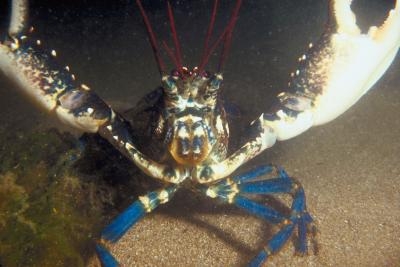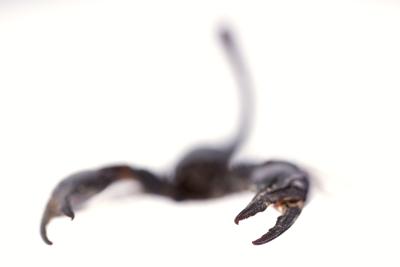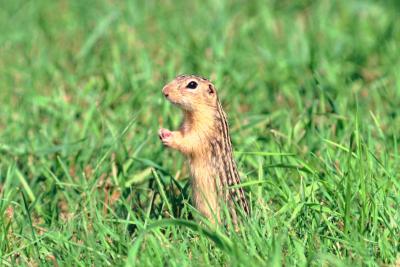
Aquarium Blue Lobster Care. A blue lobster, also known as blue crayfish or electric blue crayfish, is not the actual large blue lobster (Atroceruleous homarus) that appears only once in every 2 million lobsters in the wild. The blue crayfish (Procambarus alleni) is one of the popular crayfishes kept by aquarium hobbyists, and even though not as rare as the real blue lobster, it still needs proper care and habitat to live and breed properly.

Blue lobster can become big and the aquarium tank needs to be at least 20 gallons. The tank should also be secured on top, since the blue lobster can thrash around and can even escape. The tank environment should resemble the blue lobster's natural habitat, with gravel or fine sand and hiding places the lobster can go to rest. Water temperature should be regulated at 50 to 72 degrees Fahrenheit and alkaline pH should be seven or higher. The territorial and relatively aggressive blue lobster should be grown in a single-species tank, as it is an omnivore and a scavenger; it eats almost any other living thing placed inside the tank.
In its natural environment, blue lobsters feed on invertebrates like small shrimp, snails and algae; however, it can also eat processed fish food, such as flakes and pellets. It also tends to eat smaller fishes if kept in a community tank. Plants also serve as food and shelter, such as water hyacinth, water lettuce and watercress. Blue lobsters can easily feel stressed when the tank's water level changes, so it's always necessary to regulate and maintain the amount of water.
Blue lobsters, like other lobster species, have a mating ritual that includes the male cleaning the female's body. Once the ritual occurs and the female gives way, the copulation takes place. The female lays the eggs and carries them in a pair of abdominal appendages known as the pleopods. The eggs hatch after four weeks, with hatchlings resembling adults except for the lack of reproductive organs. First molting in young blue lobsters causes death in some, necessitating frequent water changes and regular maintenance.
As the blue lobster attains greater size, it sheds its exoskeleton and discards it at the bottom of the aquarium. Removing the discarded exoskeleton may not be necessary when the tank doesn't have young lobsters, as these crustaceans eat their own exoskeleton. An adult blue lobster can grow from 3.9 to 5.9 inches and can live for up to 20 years.
 How to Build a Habitat for a Hedgehog
How to Build a Habitat for a Hedgehog
How to Build a Habitat for a Hedgehog
How to Build a Habitat for a Hedgehog
 Can You Own Skunks in Pennsylvania?
Can You Own Skunks in Pennsylvania?
Ca
Can You Own Skunks in Pennsylvania?
Can You Own Skunks in Pennsylvania?
Ca
 Breeds of Scorpions in Texas
Breeds of Scorpions in Texas
Breeds of
Breeds of Scorpions in Texas
Breeds of Scorpions in Texas
Breeds of
 Endangered Species of Animals and Plants
Endangered Species of Animals and Plants
Endangered Species of Animals and Plants
Endangered Species of Animals and Plants
 How to Care for a Baby 13-Lined Ground Squirrel
How to Care for a Baby 13-Lined Ground Squirre
How to Care for a Baby 13-Lined Ground Squirrel
How to Care for a Baby 13-Lined Ground Squirre
Copyright © 2005-2016 Pet Information All Rights Reserved
Contact us: www162date@outlook.com